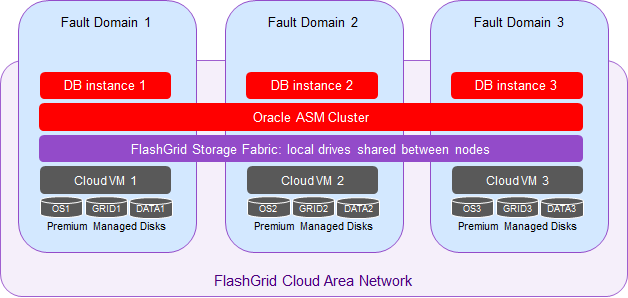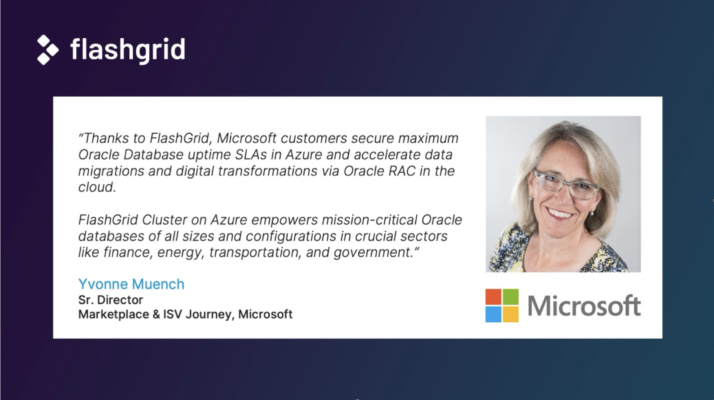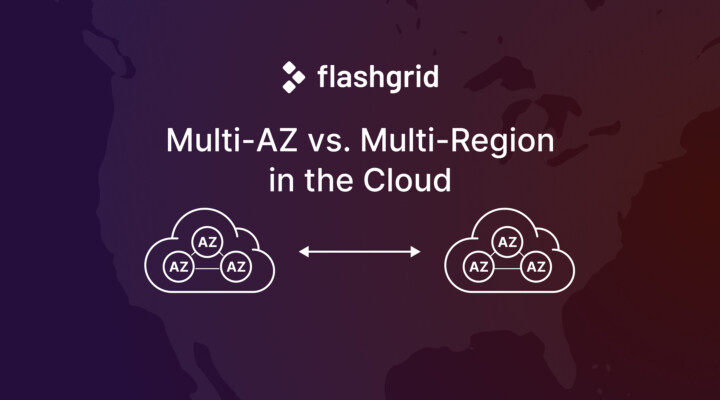Microsoft Azure cloud offers agility and cost savings over on-premise IT infrastructure. Oracle RAC offers unsurpassed database HA for mission-critical databases. But how do you use the two together? Until now this has not been possible due to certain technical limitations of the public cloud infrastructure, at least not for production-grade deployments.
In January 2017 we announced a solution for running Oracle RAC in AWS. While the same solution technically worked in Azure too, now we are officially announcing it for Azure after it has passed all validation checks and has been documented in the white paper. Azure documentation now also refers to the FlashGrid solution for running Oracle RAC.
To enable Oracle RAC in Microsoft Azure, FlashGrid provides a software layer that creates the necessary infrastructure required by the database:
- Shared high-performance storage accessible from all nodes in the cluster
- Multicast enabled network between all nodes in the cluster
- Separate networks for different types of traffic: client, cluster interconnect, and storage

While addressing the requirements, FlashGrid software stays transparent to the database; it is not involved in the data path from compute to storage. The building blocks of the infrastructure are standard Azure VMs (DS v2 and GS series are supported) and Managed Premium SSD disks.
High availability is achieved by mirroring data between the database nodes. In the unlikely event of a VM, disk, or network component failure on a node, the database will continue running on the surviving nodes. Spreading the cluster nodes across different update and fault domains ensures continuous operation during planned maintenance and also in the event of failure of shared infrastructure.
Performance tests on two DS15_v2 database nodes with sixteen 513 GB Premium SSD disks per node have yielded 121,597 IOPS under a read-only load, and 53,839 IOPS in a read-write use scenario. The results are comparable to using a dedicated all-flash storage array. IT organizations migrating from legacy on-premises systems have an opportunity for an order of magnitude increase in the performance of their database systems in addition to realizing other benefits of using the public cloud infrastructure.
FlashGrid Cloud Provisioning makes the process of deploying a highly available database cluster in Azure cloud easier and faster than with traditional hardware running on-premises. Even those organizations that previously could not afford the complexity of deploying HA database clusters on-premises now can do it in the cloud.








